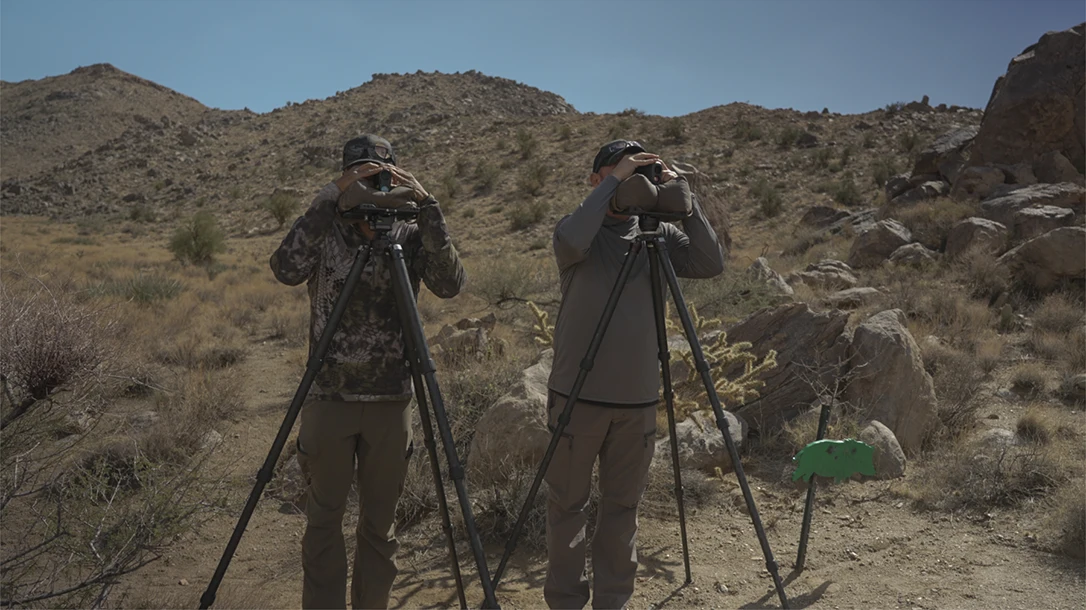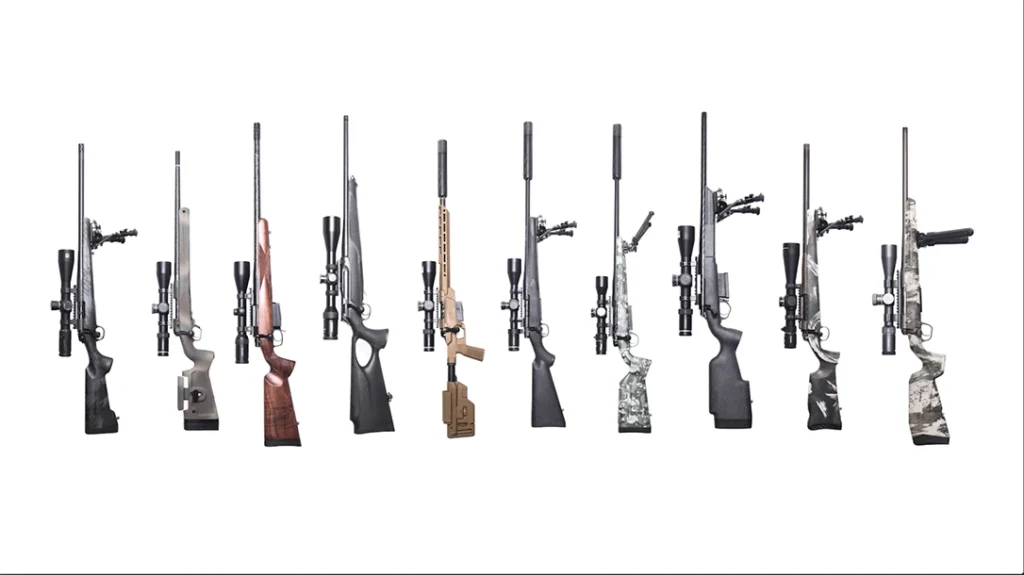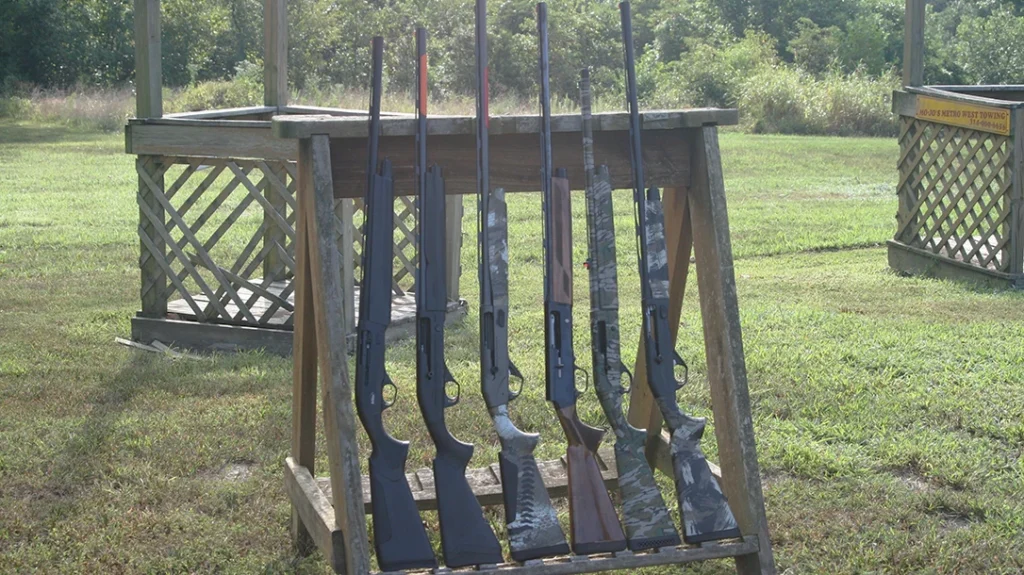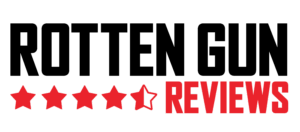So much is necessary for success in precision shooting. And while this Ballistic’s Best is about hunting gear, precision shooting is a big portion of hunting, especially out west where I live. Heck, even if you’re lucky enough to take a deer beyond 120 yards in the east or midwest I have news for you…that’s precision shooting. Some of you found this out the hard way. No matter where you hunt it’s important to know the distance that you’re shooting.
I know some of us just hold over with an “ish” range (300-ish). But I don’t believe in that. When I come in for a hunt, I come in to shoot with a zeroed rifle doped out to 1,000 yards that way I’m confident at the likely distances I’ll be shooting at, which should be much shorter. But in order to hit at any distance the ranging is of utmost importance which makes the rangefinder of equal importance.
First Year For Laser Rangefinders
This is our first year looking at Ballsitc’s Best laser rangefinders and to be honest I wasn’t sure where to start with so many options out there. Then it hit me—break them into two categories, hand held and binoculars, that way all the bases are covered, although we do have a few rifle mounted options available, those still need to gain some more traction and use before we consider them. We have six handheld units and five binos for this years competition.
I steered clear of budget options that could barely muster 700 yards or so. Why? Well because you can never have too much ranging capability. Whether a rangefinder ranges too far is subjective. But one that doesn’t range far enough is absolute. I’d rather have it and not need it than need it and not have it. That said, these rangefinders will cover you from seven yards to well beyond 2,000 yards in many cases. So you’ll be able to range the ethical shot with ease, but you’ll also be able to range your surrounding environment and gather important location info for where you are, where your target is or was, and where you need to be.
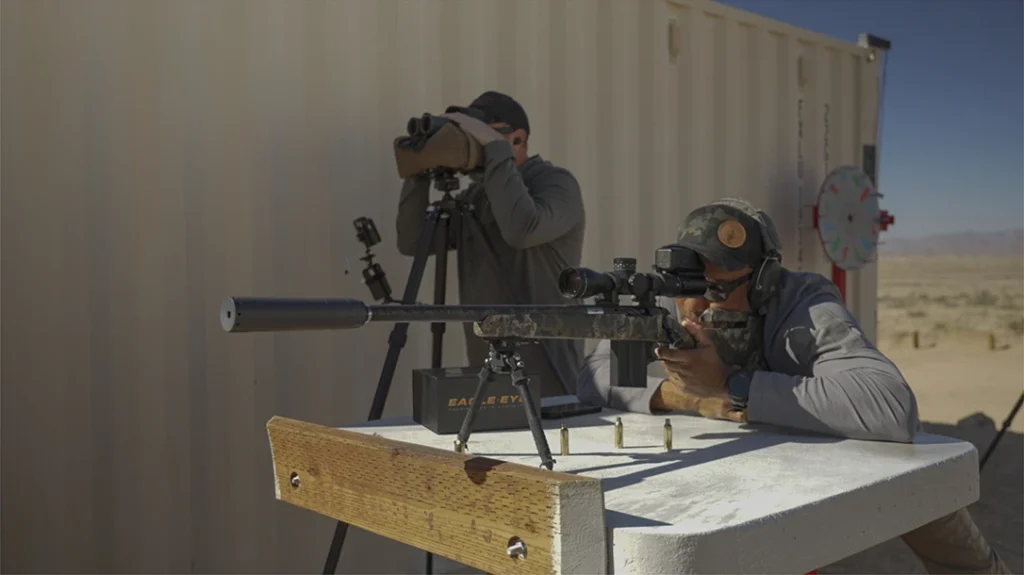
Advertisement — Continue Reading Below
Factors
We will judge the these laser rangefinders on the following factors:
•Overall Build Quality/Fit & Finish
Does the product meet expectations, exceed, or fall short. We all like nice things and our eyes and hands convey a message of quality or lack thereof.
•Ranging Ability/Function (real world vs. claimed)
How fast does the unit give us a range and is that range accurate? Is it consistent or does it differ from the other units. How many presses of the button does it take and in what conditions.
•Glass/Clarity
This is especially important for the bino units since these will double for possible long hours of glassing. Clarity goes a long way for this and good low light performance may be the most important factor
•Ballistics Capability
A good LRF unit not only gives you an accurate range but these days should be able to give you reliable targeting information (read D.O.P.E.) to help you hit that target. Nearly every unit in this bunch has this capability and if not, well it should.
Advertisement — Continue Reading Below
•Feature Set
What other helpful features are included in the unit?
•Ergonomics/Actuation Ease (how easy it is to activate the LRF)
Handheld units can be tricky. While they are lightweight and (mostly) easy to hold sometimes the ranging/fire button is so stiff it makes it impossible to range while staying completely on target. We’ll assess for this.
•Display Information
What’s on your screen and is it helpful? Easy to see and decipher?
•Included Accessories
What’s in the box? Does the unit have what you need to be successful with it once you’re out in the field? I feel it’s necessary to have the capability to attach the unit to a tripod. This can be done via built in 1/4” threading or an included adapter.
•Price/Value
Speaks for itself. If the unit is expensive, does it justify the price with performance to match? How much bang are you getting for your buck?
Advertisement — Continue Reading Below
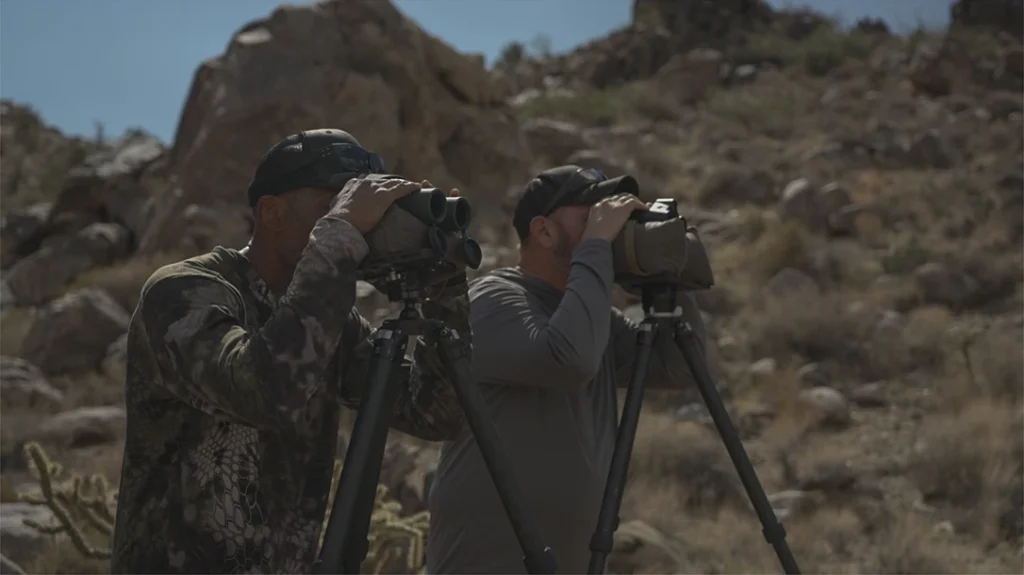
I considered evaluating size but they are all so close in size that it didn’t seem to make much sense. Each of these nine factors is graded on a 5 point scale in .5 increments. We had two evaluators, myself and my friend Chuck Adair who is dipping into precision shooting.
To test the DOPE/ballistics capabilities I thought the best approach would be to take a single, hunting-focused rifle and one brand and load of ammo and engage targets using the solutions from each range finding unit based on the range it gave me Hit or miss. The goal was to shoot 3-5 rounds based on wind conditions but I wouldn’t penalize for wind as much as for elevation errors.
Ammo Used
The ammunition that I chose is Eagle Eye Ammunition, based out to Arizona. Eagle Eye is known for engineering and manufacturing very high quality ammunition with great consistency and low SD’s, comparable to hand loading. It has been used to win everything from regional PRS titles to world championship sniper competition titles including the USASOC International Sniper Competition in 2025. Eagle Eye utilizes the best components and strict quality control standards to achieve velocities that are consistent across many platforms. In long range shooting this consistency is key and makes all the difference once targets start getting smaller and further away.
Eagle Eye manufactures both hunting and precision match loads and I opted for 6.5 PRC shooting a 153-grain Berger bullet. I tested the ammo and it was consistent with an SD of only 8 fps so I was confident rifle/ammo performance wouldn’t be an issue.
Advertisement — Continue Reading Below
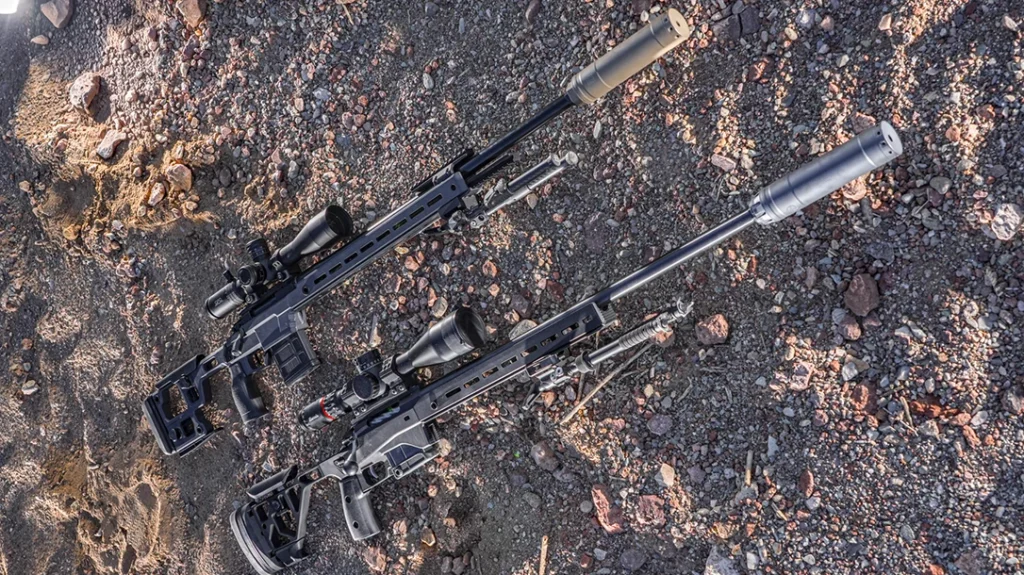
In the end all the ballistic solvers gave pretty much the same DOPE wishing .2 MIL at an ethical 453 yards. First round impacts abounded at first then tricky wind conditions changed everything. Again solutions were all within .2 MIL of each other so I was happy that the solvers all worked.
Binos Laser Rangefinder Results
5th Place: Vortex Fury HD 5000
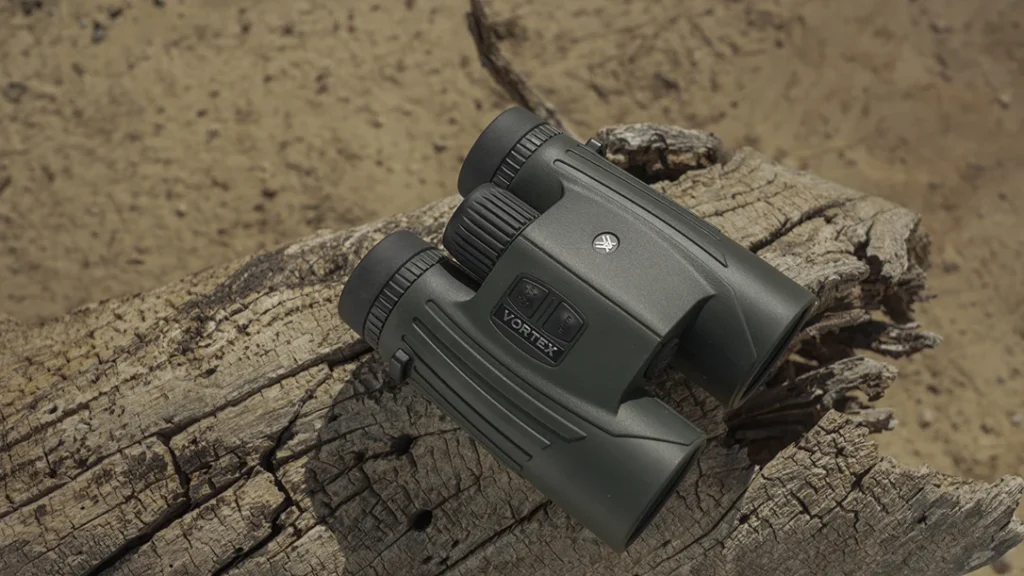
These binos are really good but this field is a tough one. The Fury HD5000 lack one of the necessary features for success in LRF binos—ballistics solving capability. I’m sure their next model will have it since their handheld unit does.
Vortex surprised us with excellent clarity and ranging speed. It did well with high angle ranging as well as straight on. The Vortex took dings in build quality due to the finish of the binos. It doesn’t appear as polished as the others. We gave another nod to it for it’s insane ranging capability earning the HD 5000 moniker with a third best long distance range performance at 5,006 yards.
Advertisement — Continue Reading Below
The Vortex didn’t’ disappoint at all but again, technology waits for no one and this unit is down on tech at this point.
4th Place: Leupold BX4 Range HD TBR/W Gen 1

The Leupold had us raving and upset all at once. These binos are beefy and have a presence amongst the others. They are the ones you want to pick up an use. These did have some ranging issues when it seems other units didn’t. Sometimes they just didn’t want to range although conditions weren’t hindering them in anyway. And they didn’t always perform well beyond 1300 yards. It could be hit or miss.
They do have Leopold’s DNA ballistics power inside as well as good optical performance but we both felt they weren’t quite as crisp as the Sig or Vortex. We like the ability to assign which button side performed ranging. Through sheer attraction these were the binos we wanted to use most, but perhaps we needed the Gen 2 version to make up for where these binos didn’t shine as much.
3rd Place: Swarovski EL Range 42×10
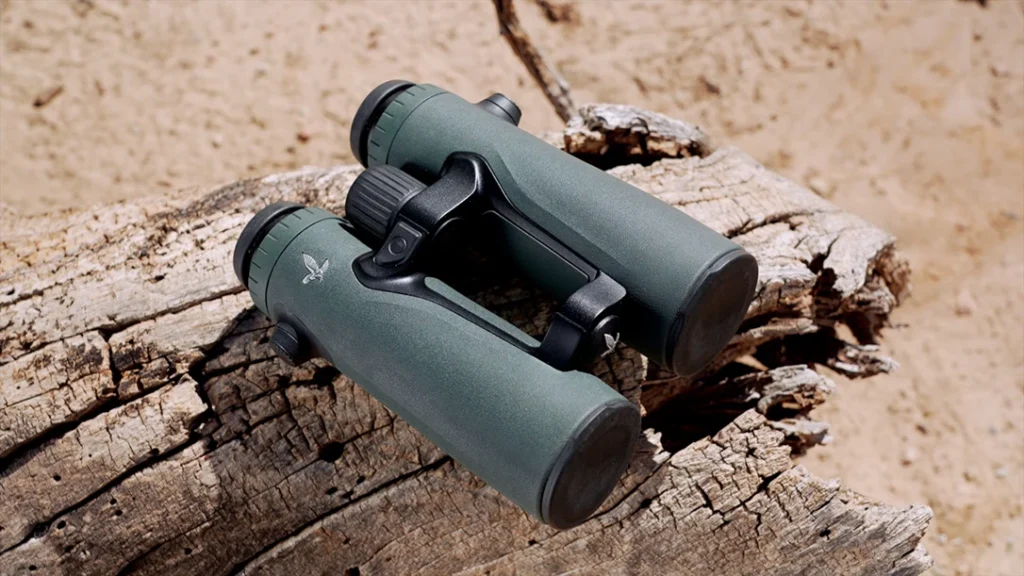
Advertisement — Continue Reading Below
You simply have to like Swaro’s because, well, they’re Swaro’s! Great glass with excellent color fidelity that was pleasing to the eye. These are the units you want to be glassing with all day (if necessary). The EL Range have excellent clarity but blew the others out of the water with an ability to project depth which is hard to do at magnification.
They have an improved ballistics engine and app that was a pain to use when they first launched but now it’s rather simple to use, pairs with your smart phone, and gave accurate results like all the other units did. Ergonomcally I liked these the best, they just fit the hands right with no unnecessary bulk anywhere. While a bit long, they are more streamlined with classic binocular feel. Ranging capability was good and really strong and fast out to 1300 yards or so.
They ain’t cheap so value takes a bit of a hit for the total package that doesn’t give you anything beyond the binos, strap, cover, and case. You’re paying for the Swarovski glass performance coupled with a reliable reader.
2nd Place: Leica Geovid Pro 10×32
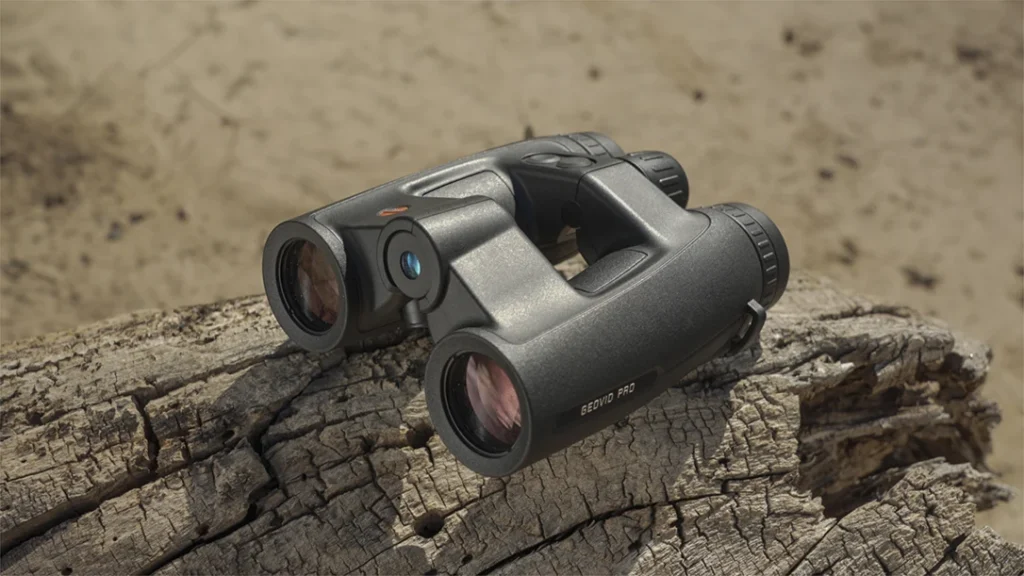
Like the Swaro’s the Leica have exceptional glass and we felt like a smidge more clarity than the Swaro’s, while I noted they weren’t as bright and the colors were flatter. They also don’t have the depth of the Swaro’s. So why are the Leica’s ahead of them? It comes down to the ballistics capabilities and Leica now mates with the new Applied Ballistcs Quantum app. This app manages all of your gun profiles as well as your Bluetooth devices such as the Leica’s and a whole host of other products. It’s one-stop easy.
Advertisement — Continue Reading Below
The Leica’s tough to beat the ballistics solutions that Applied Ballistics offers, if you can beat it at all. It’s what they do and more and more products are joining forces with them. Once you true up your shooting data on a rifle, no matter what ranging unit you use, you’ll have a consistent outcome.
The Leica are the smaller to the group and ergonomically “different”, placing only second to the Swaro’s. The unit’s display looks dated in this bunch and a refresh is necessary. It suffered in the accessory and value department. Being another unit over $3,000 MSRP, you just wish it came with a better case or something. Solid unit all around, though.
1st Place: Sig Kilo10K-ABS HD Gen2
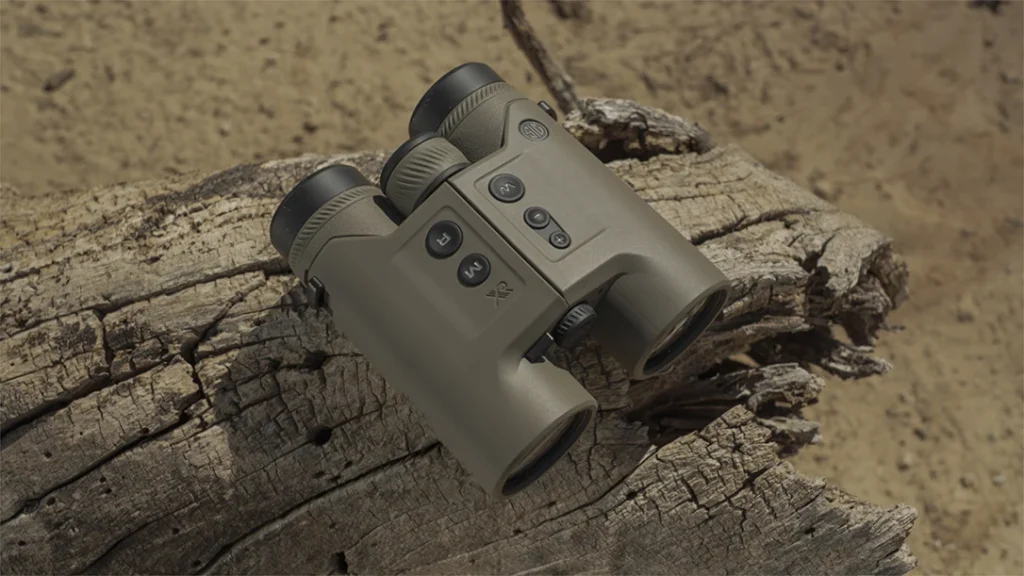
Sig came out swinging many years ago with their Kilo 3K. A blistering fast pair of LRF binos that made up for its other shortcomings with sheer distance and speed. They are still a great unit if you only need basic function. Their Gen 1 Kilo10K was a big step up and two steps down due to the overpowering blue hue to the lenses. It helped with ranging performance but was too much for most users to deal with. Enter Gen 2.
The Gen 2 Kilo10K shines like a new penny no matter what the competition. Sig got around the color cast by making one lens clear. Now you get turbo charged ranging and excellent clarity that is only outclassed by the Leica and Swarovski which was another surprise. Head to head it was a tough call but while the Sigs are really good, the clarity seemed almost contrived. Sort of like turning up the sharpness in a photo editing app.
Advertisement — Continue Reading Below
The Kilo10K ABS ballistics are powered by Applied Ballistics and links up with Kestrels and Garmin devices and all can be monitored the via AB Quantum app. With multiple buttons for operation of features and menu navigation, using the 10K is a delight—a two-button setup gets confusing and slow after a while, especially now that we can dial in wind on these LRF units.
The build looks and feels rugged on the Sigs. Everything is presented well and feels tough as nails. You don’t feel like you have to baby them in any way.
Only one other product out ranged the Kilo 10k’s 5,800 yard best and it was a handheld unit. With all the power the Sig possesses, it truly delivers it well and at a price that seems more fitting than others although not cheap. It has looks, feel, and just about everything else to boot. These binos deliver ranging, accurate ballistics, and confidence. And that’s why the Sig Kilo 10K is Ballistic’s Best LRF Binos for 2025.
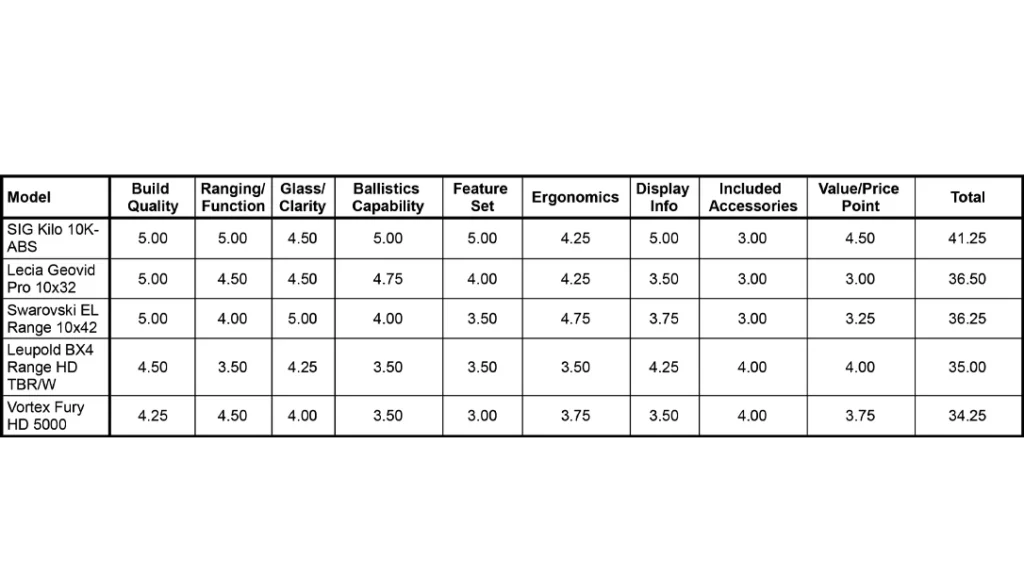
Handheld Laser Rangefinder Results
Just like in the bino category, the competition is stiff in the handheld LRF category with units boasting tons of features and capabilities into some rather overall compact units. It’s a fierce battle for handheld units and manufacturers must bring their A game.
6th Maven RFZ.1 6-12×21

We wanted better for the Maven. Why? Because it’s an absolute pleasure to use. It is the largest of these units but not unnecessarily so. It does things none of the others can do. First it has a variable zoom feature up to 12x which is nice when you want to punch in on your ranging target a bit more. It has a knob on the side with a button in the center of it. Push the button and the menu comes to life and simply turn the knob to what you desire and select with the button. This is LRF navigation made easy.
The major issue, we couldn’t get any appreciable ranging distance out of the unit. Yes it will do 700 and 800 yards quickly, but it struggled beyond this range and we have no idea why when it is advertised out to 4500 yards. Even on our mondo sized long range reflective target we couldn’t get much more than 900 or so yards. In the field when other units were grabbing a tree at 1300, the Maven did return a range but it was not consistent.
We’re not mad, but more disappointed in the Maven because the looks and the build quality are solid, coupled with the zoom and navigation it builds your hopes. Maybe we have a bad unit?
5th Revic BR4
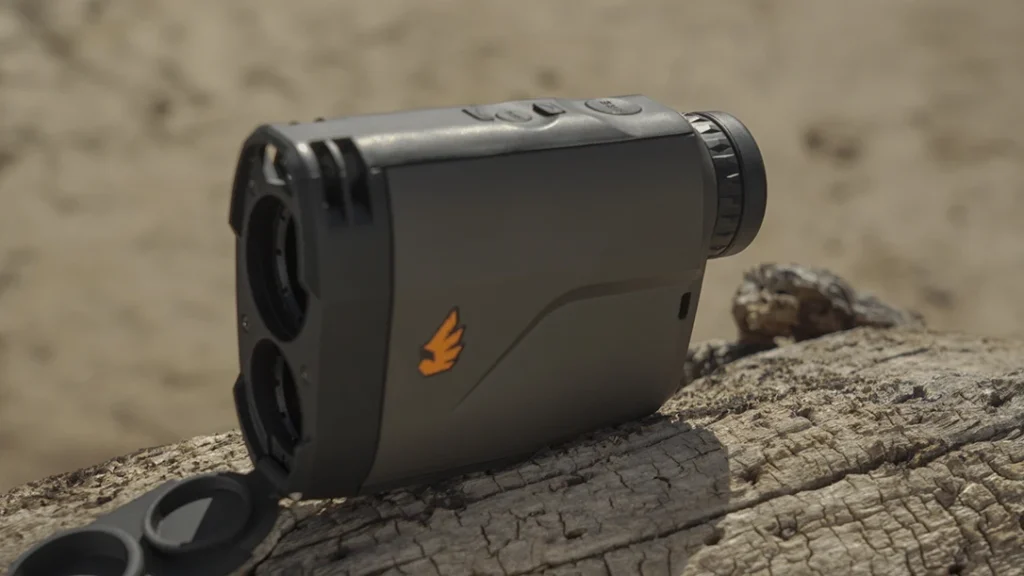
Two years ago this LRF would have likely won this competition. The BR4 is a beast of a handheld unit. And any product associated with Gunworks is required by the company to perform at high levels.
The BR4 ranges well and does so quickly. It grabbed desert vegetation in the distance at over 2200 yards. It takes advantage of the Revic ballistics app that leaves nothing to be desired. Profiles can be created and edited with a bullet library. The BR4 syncs up with your smart device for syncing and you can input wind and wind direction in to the BR4 on the fly. All that data is presented back to you when you range to give you a proper come up and wind hold. The way the info is displayed isn’t laid out well and just seems like a bunch of data in front of your eye.
That glass is pretty good on the unit, and handhelds can leave a lot to be desired in this fashion. Overall it’s a great unit. It ranked high in glass clarity and feature set. It took hits in ergos with a button that was harder to actuate and typically led to you coming off target when not supported. It’s not a bad unit at all, its just a really tough field of entrants.
4th Vortex HD 4000 GB
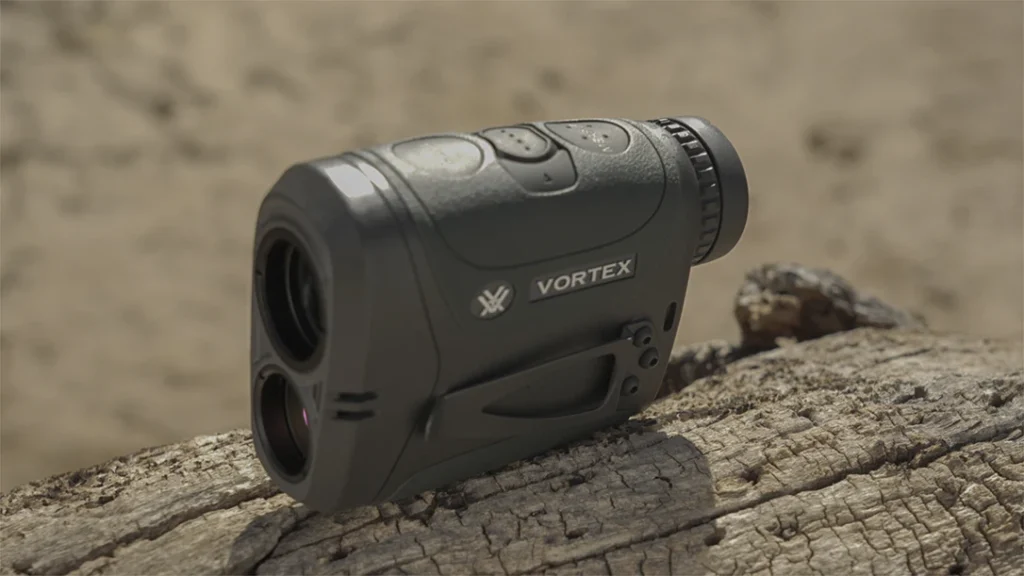
Another great handheld LRF, the Vortex got many high marks with Knothing below a 4 on a 5 point scale. As an overall package it delivers the goods. Great ranging capability with speed, ample glass clarity, solid build and ergos. It even has belt clip attached to it for expedited use.
Vortex uses the most excellent GeoBallistics software and although I don’t completely know, I think Vortex bought the IP of the solver that is on par with Applied Ballistics. The Vortex syncs up with GeoBallistics and lets you monitor and edit profiles, range and view come up info on your smart device. Getting your profiles into the unit is a bit of a challenge if you’ve never done it before. Overall it’s a solid performer and would serve the user well.
3rd Leica Rangemaster CRF Max
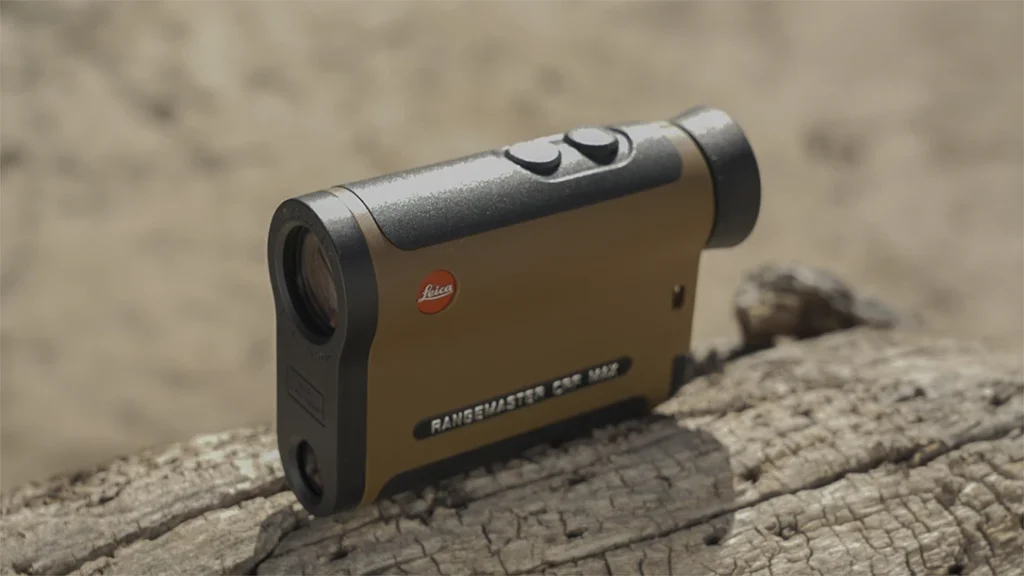
This is the newest unit of the bunch, launching only a couple of weeks ago and literally showing up as we were concluding our evals. It was well worth the wait. The Leica is an excellent unit that is lightweight, handsome, fast, and packed with the technological goods. AB is inside, Elite in fact, and it links up with the Quantum app to give you ease of use and management of your rifle/bullet profiles. It also connects to Kestrel, Garmin, and GPS apps so you can mark where you are and where you are ranging to.
The display info is the best of the bunch with a layout that makes you want to range and range again just so you can see it. Come ups and wind hold data is beautifully presented thanks to an Active Matrix MicroLED display. It also has clear glass—like regular, no tint glass so you can see mirage even with only 7x magnification.
I expected the Leica to win but we think the overall build quality suffers due to a rather hard plastic body that is likely to show wear, bumps, and bruises more than others. It feels and looks “plasticky”, but maybe that’s why it’s noticeably lighter than the other units. At $1500 we’d also like to see a tripod adapter with it instead of having to pay another $100 dollars for one as an accessory.
You can’t go wrong with this unit though, it’s strong to say the least and is the latest and greatest in tech. It does well for the Leica name.
2nd Sig Kilo8K-ABS
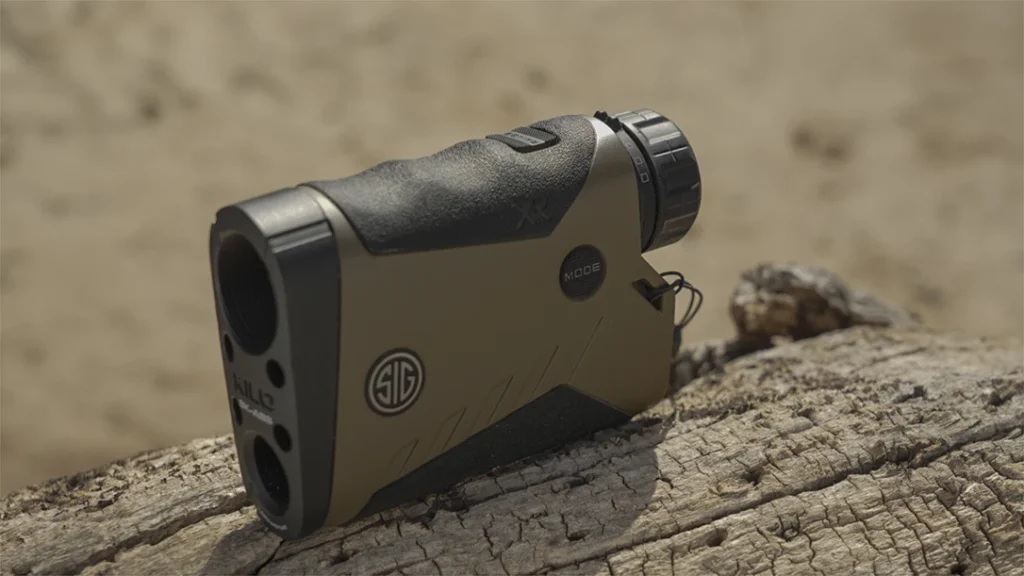
I didn’t expect the Kilo 8k to best the Leica. In fact I was sure the Leica would be first place. But the Kilo 8k brings goods where the other don’t. Yes, it’s older with a couple of years on the Leica and the Vortex but it does all the things they do, works within the Applied Ballistics universe and the Quantum, syncs up with Basemap and devices like Garmin watches.
The display provides excellent information in a great layout, while not as eye-catching as in the Leica. It ranges far and fast but reaching out to 8K as the name implies doesn’t seem realistic. It does well out to 2100 yards or so and has multiple ranging modes if you need to push it.
While the glass is ok, the Sig gives us the warm and fuzzies with included accessories such as a pouch, tripod mount, and wind meter—all this in a nice field-ready carry case. We’re splitting hairs here and no doubt the Sig owner will appreciate the added goods and this gives it a value bump.
1st Leupold RX-5000 TBR/W

Long live the King! No beating around the bush here, the Leupold RX-5000 is the laser ranging king of handhelds and even binos in this test. We maxed it out (finally) after punching a 6,407 yard reading on the highly reflective target. Even then, we don’t even know if it maxed out because we actually ran out of space. We drove as far out as we could while maintaining line of sight only to start losing elevation making it impossible to see the target. I even stood in the back of my pickup, ranging between some heavy equipment that was partially in the way and the Leupold still delivered.
It’s not a one-trick pony though. It does link up quite nicely with the Leupold Control app which gives you HUD capability and hands free ranging, as well as ballistics solver. This is where I wish the Leupold had a better, more mainstream solver. It’s not hard to use but being very hunting focused it only allows for a 200 yard zero (at least as far as I could tell). It’s not as intuitive from a total long range precision shooting point of view but again it’s for hunting and has a bow mode.
Glass is good and you can see mirage but with a tint the Leica doesn’t have. It feels rugged and robust in the hand—like a small tank. It is heavy comparatively but likely due to the technological muscle infused within it.
The RX-5000 checks high on all the boxes, has a tripod adapter too and it comes in at a jaw dropping $799 MSRP while eclipsing the Sig Kilo 10K in our long ranging tests. There’s horsepower in the Leuy, and while extreme distance is not the sole indicator of a good LRF its precision and speed invokes confidence that you’re getting the accurate range sometimes seemingly before you even push the button.
The Leupold’s understated looks give way to a LRF juggernaut that leaves the user somewhat dumbfounded by its capability much of the time and that’s why it’s Ballistics Best handheld LRF for 2025.
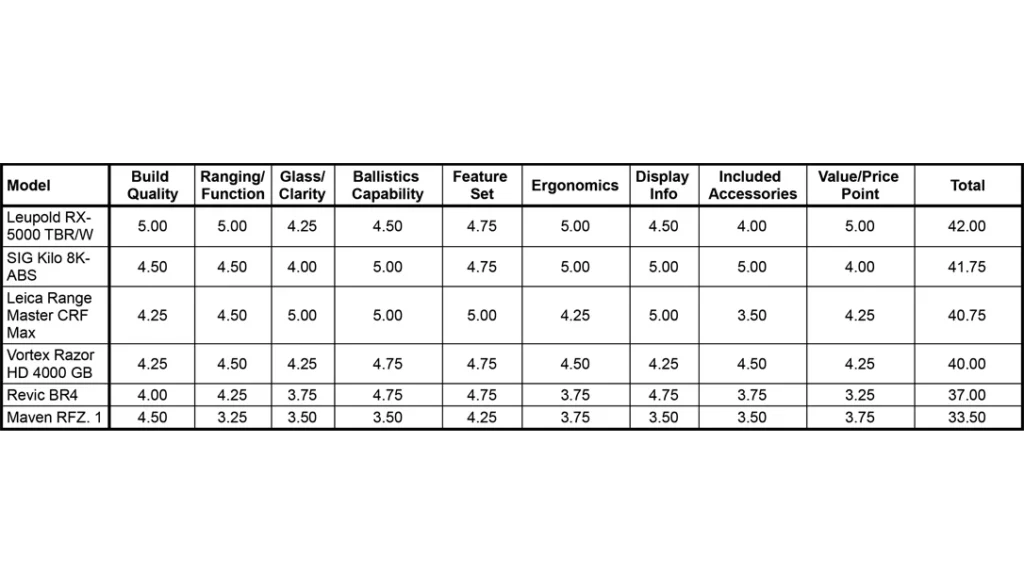
WHY OUR ARTICLES/REVIEWS DO NOT HAVE AFFILIATE LINKS
Affiliate links create a financial incentive for writers to promote certain products, which can lead to biased recommendations. This blurs the line between genuine advice and marketing, reducing trust in the content.
